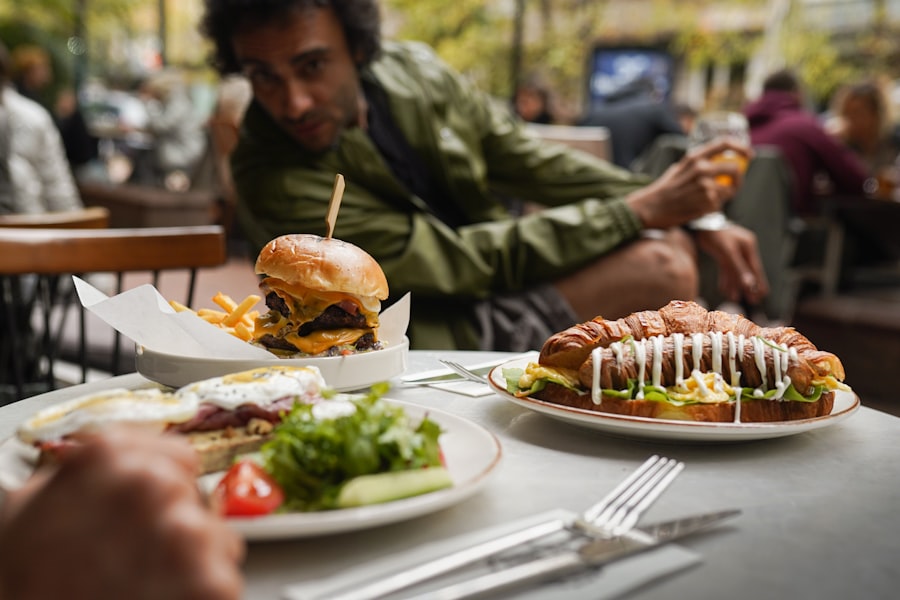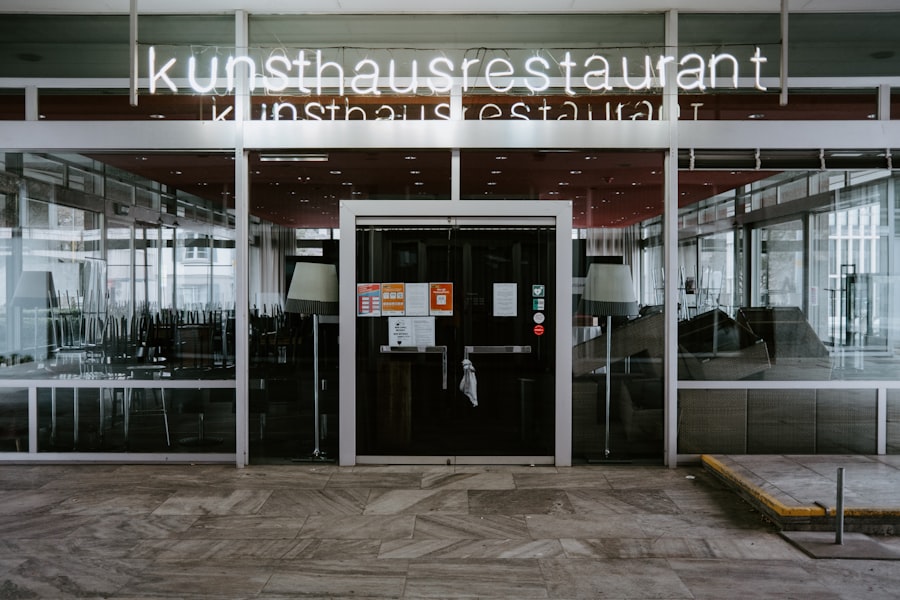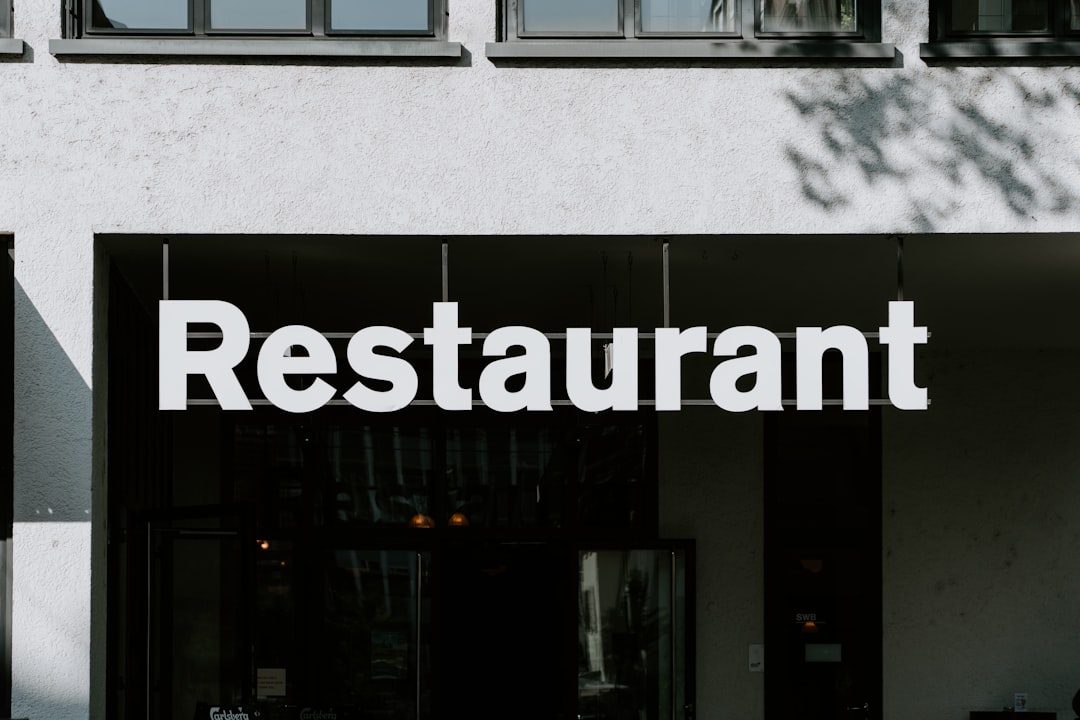In recent years, food delivery apps have transformed the way you experience dining. With just a few taps on your smartphone, you can have a wide array of culinary delights delivered right to your doorstep. This convenience has led to a surge in the popularity of these platforms, making them an integral part of modern life.
As you scroll through your favorite app, you may find yourself overwhelmed by the choices available, from local favorites to international cuisines. The rise of food delivery apps is not merely a trend; it represents a significant shift in consumer behavior and expectations. The COVID-19 pandemic accelerated this shift, as many restaurants were forced to adapt to new realities.
With dining rooms closed or operating at reduced capacity, food delivery apps became a lifeline for both consumers and restaurants alike. You may have noticed that your go-to eateries began offering delivery services, often through partnerships with these platforms. This evolution has not only changed how you order food but has also reshaped the restaurant industry as a whole, prompting many establishments to rethink their business models and strategies.
Key Takeaways
- The rise of food delivery apps has revolutionized the restaurant industry, providing convenience for customers and new opportunities for businesses.
- The appeal of food delivery apps lies in the convenience factor, allowing customers to order from a wide range of restaurants and have their meals delivered to their doorstep.
- Operating on food delivery apps comes with costs such as commission fees, which can impact restaurant profit margins and require careful consideration.
- Marketing and promotions are essential for restaurants to stand out on food delivery apps and attract customers in a competitive market.
- Integrating with food delivery apps involves technology and infrastructure costs, as well as the need for quality control and packaging for delivery orders.
The Convenience Factor: Understanding the Appeal of Food Delivery Apps
The allure of food delivery apps lies primarily in their convenience. You no longer need to dress up or travel to your favorite restaurant; instead, you can enjoy a gourmet meal in the comfort of your home. This ease of access is particularly appealing after a long day at work or during inclement weather when venturing out may not be ideal.
With just a few clicks, you can browse menus, read reviews, and place an order—all from the palm of your hand.
Moreover, the variety offered by these platforms is staggering.
You can explore different cuisines and discover new restaurants without ever leaving your home. Whether you’re craving sushi, pizza, or vegan fare, food delivery apps provide an extensive selection that caters to diverse tastes and dietary preferences. This accessibility allows you to indulge in culinary adventures that you might not have considered otherwise, making dining more exciting and less monotonous.
The Costs of Operating on Food Delivery Apps: A Breakdown

While food delivery apps offer undeniable benefits to consumers like you, they come with a host of costs that restaurants must navigate. These expenses can include everything from commission fees to technology integration costs. For many establishments, especially smaller ones, these fees can be a significant burden.
You might not realize that when you order from your favorite local eatery through an app, a portion of that payment goes directly to the platform, often leaving the restaurant with a fraction of the total sale. Additionally, restaurants must invest in technology to ensure seamless integration with these apps. This includes updating their point-of-sale systems and training staff to manage online orders effectively.
These costs can add up quickly, particularly for smaller establishments that may not have the same financial resources as larger chains. As you enjoy your meal at home, it’s essential to consider the financial implications for the restaurant that prepared it.
The Impact of Commission Fees on Restaurant Profit Margins
| Commission Fee | Restaurant Profit Margin |
|---|---|
| 5% | 15% |
| 10% | 12% |
| 15% | 10% |
Commission fees are one of the most significant challenges restaurants face when partnering with food delivery apps. Typically ranging from 15% to 30% of each order, these fees can severely impact profit margins.
Restaurants often find themselves in a difficult position: they want to remain competitive and accessible while also ensuring their business remains viable. As you browse through various options on a delivery app, you may notice that some restaurants have adjusted their prices for online orders compared to in-house dining. This is often a direct response to the commission fees they incur.
While it may seem like a minor inconvenience for you, it reflects the broader economic pressures that restaurants face in this new landscape. Understanding this dynamic can foster greater appreciation for the meals you enjoy and the hard work that goes into providing them.
The Need for Marketing and Promotions to Stand Out on Food Delivery Apps
In a crowded marketplace filled with countless options, marketing becomes crucial for restaurants looking to stand out on food delivery apps. With so many choices at your fingertips, it’s easy to overlook smaller or newer establishments unless they actively promote themselves. Restaurants must invest in marketing strategies that highlight their unique offerings and attract your attention amidst the sea of competitors.
Promotions and discounts are common tactics used by restaurants to entice customers like you to try their food. Whether it’s a limited-time offer or a special deal for first-time users, these incentives can make all the difference in capturing your interest. As you scroll through various options, keep an eye out for these promotions; they not only benefit you as a consumer but also help restaurants increase their visibility and sales in an increasingly competitive environment.
The Technology and Infrastructure Costs of Integrating with Food Delivery Apps

Integrating with food delivery apps requires significant investment in technology and infrastructure for restaurants. This includes updating their ordering systems, ensuring they can handle online transactions efficiently, and maintaining accurate inventory levels. For many establishments, especially those that are smaller or family-owned, these costs can be daunting.
You might not think about the behind-the-scenes work that goes into ensuring your order is processed smoothly when you click “checkout.” Moreover, restaurants must also consider the ongoing costs associated with maintaining this technology. Regular updates and troubleshooting are necessary to keep systems running smoothly and ensure customer satisfaction. As you enjoy your meal delivered to your door, remember that there’s a complex web of technology working behind the scenes to make it all possible.
The Importance of Quality Control and Packaging for Delivery Orders
When ordering food for delivery, quality control becomes paramount. You expect your meal to arrive fresh and appetizing, but this can be challenging for restaurants when food is transported over distances. Proper packaging plays a crucial role in maintaining the integrity of your meal during transit.
Restaurants must invest in high-quality packaging solutions that keep food hot or cold as needed while preventing spills or damage. As a consumer, you may have experienced the disappointment of receiving an order that didn’t meet your expectations due to poor packaging or handling during delivery. Restaurants are acutely aware of this issue and strive to implement best practices for quality control.
This includes training staff on how to pack orders properly and ensuring that delivery drivers are equipped to handle food with care. Your satisfaction hinges on these efforts, making quality control an essential aspect of the food delivery experience.
The Role of Customer Service and Support in Managing Orders from Food Delivery Apps
Customer service is another critical component when it comes to managing orders from food delivery apps. As a consumer, you expect prompt responses to any issues or inquiries regarding your order. Restaurants must be prepared to handle customer service inquiries efficiently while juggling the demands of their kitchen operations.
This often requires dedicated staff who can manage online orders and address any concerns that arise. When issues do occur—whether it’s an incorrect order or delays in delivery—effective communication is key. You appreciate timely updates and resolutions when things don’t go as planned.
Restaurants that prioritize customer service can build loyalty among their patrons, encouraging repeat business even amidst challenges posed by food delivery apps.
The Challenges of Managing Inventory and Supply Chain for Food Delivery Orders
Managing inventory and supply chain logistics is another hurdle that restaurants face when operating through food delivery apps. With fluctuating demand driven by online orders, it can be challenging for establishments to maintain optimal inventory levels without overstocking or running out of popular items. As a consumer, you may not realize how much planning goes into ensuring that your favorite dishes are available when you want them.
Additionally, supply chain disruptions—whether due to seasonal changes or unforeseen circumstances—can impact a restaurant’s ability to fulfill orders consistently. Restaurants must develop strategies to adapt quickly to these challenges while still meeting customer expectations for quality and availability. Your dining experience is directly influenced by how well restaurants manage these complexities behind the scenes.
The Impact of Food Delivery Apps on In-House Dining and Traditional Restaurant Operations
The rise of food delivery apps has undeniably impacted traditional restaurant operations and in-house dining experiences. Many establishments have had to adapt their business models to accommodate this shift in consumer behavior. As you may have noticed, some restaurants now focus more on takeout and delivery services rather than dine-in experiences, leading to changes in staffing and layout.
This shift can also affect the overall atmosphere of dining out. With more people opting for convenience over traditional dining experiences, restaurants may find it challenging to create an inviting ambiance that encourages patrons to visit in person. As someone who enjoys dining out occasionally, it’s essential to recognize how these changes shape the culinary landscape and influence your choices as a consumer.
Navigating the Costs and Benefits of Food Delivery Apps for Restaurants
As you navigate the world of food delivery apps, it’s crucial to understand both the benefits and challenges they present for restaurants. While these platforms offer unparalleled convenience and variety for consumers like you, they also impose significant costs on establishments striving to remain competitive in an evolving market. From commission fees and technology investments to quality control measures and customer service demands, restaurants face numerous hurdles as they adapt to this new landscape.
Ultimately, your experience as a consumer is shaped by these complexities behind the scenes. By recognizing the efforts that go into delivering your favorite meals right to your door, you can foster greater appreciation for the culinary world around you. As food delivery apps continue to evolve, both consumers and restaurants will need to navigate this dynamic landscape together—finding ways to balance convenience with sustainability and quality in an ever-changing industry.
In recent years, many consumers have noticed that ordering food through apps can be more expensive than dining in or ordering directly from the restaurant. This price discrepancy is often due to the additional fees that apps charge restaurants for using their platform, which are then passed on to the customer. An insightful article on this topic can be found on How Wealth Grows, which delves into the economics behind these pricing strategies and how they impact both consumers and restaurant owners. For more information, you can read the full article by visiting How Wealth Grows.
💸WATCH THIS! The Hidden Tax That Makes Everything You Buy a Scam
FAQs
Why do restaurants charge more on apps?
Restaurants may charge more on apps due to the fees associated with using third-party delivery platforms. These platforms typically charge restaurants a commission fee for each order, which can lead to higher prices for customers.
How do third-party delivery platforms affect restaurant pricing?
Third-party delivery platforms charge restaurants a commission fee for each order, which can cut into the restaurant’s profits. To offset these fees, restaurants may increase prices on the app to maintain their profit margins.
Are there other factors that contribute to higher prices on apps?
In addition to commission fees from third-party delivery platforms, restaurants may also consider other factors such as packaging costs, delivery driver fees, and marketing expenses when setting prices on apps.
Do restaurants always charge more on apps?
Not all restaurants charge more on apps. Some restaurants may choose to absorb the commission fees from third-party delivery platforms and keep their prices consistent across all ordering channels.
What are some alternatives to ordering from apps to avoid higher prices?
Customers can consider ordering directly from the restaurant’s website or calling in their orders to avoid the potential price markup on third-party delivery apps. This can help support the restaurant and potentially save on costs.
